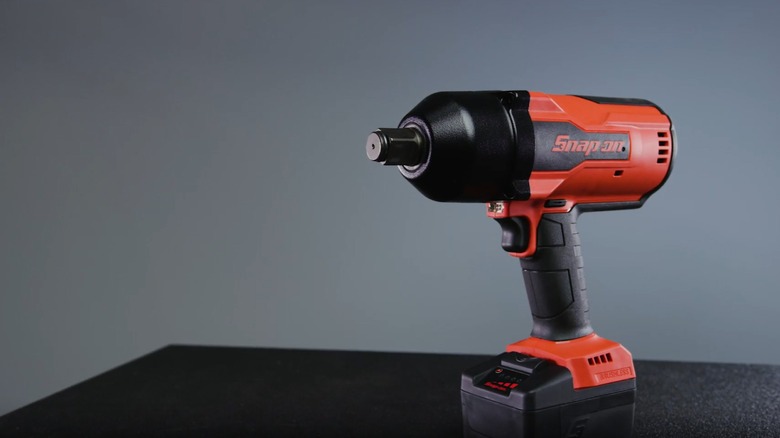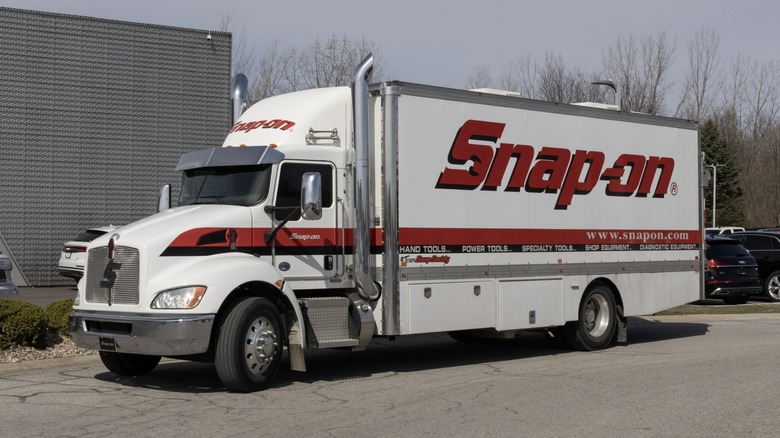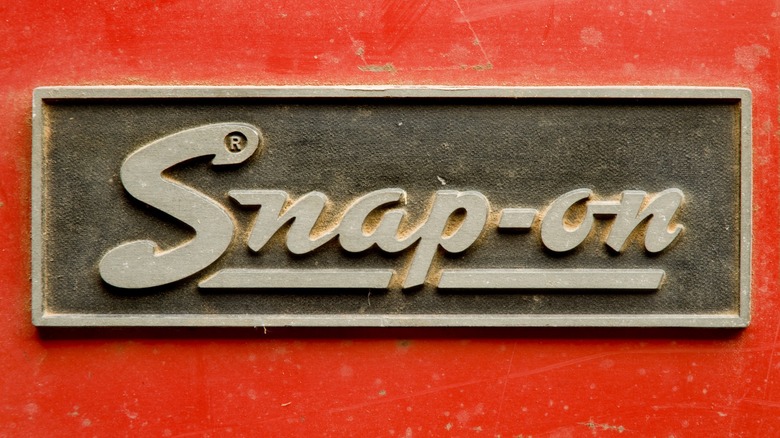Even Snap-On Cordless Power Tools Are Crazy Expensive - Here's How Much They Cost
Historically, cordless power tools are not known to be cheap since they require batteries and chargers, unlike their corded counterparts. But even then, it presents a moment of reckoning when you pick up one of Snap-on's cordless tools and take a glance at the price tag. When comparing corded and cordless power tools, it's clear that cordless models usually attract a higher price thanks to the added convenience and technology.
Snap-on takes that gap even further in a tool industry that already has many powerful, reliable, and relatively affordable brand options. As a result, the cost of entering its cordless ecosystem can feel like an outrageous financial obstacle. Something like an air-powered half-inch drive heavy-duty impact wrench from the brand will cost you over $700, while a small, 3/8-inch drive ratchet goes for about $200. However, to stop the conversation at the cost alone is to miss out on the appeal; or, at least, a part of it.
The brand believes that the premium paid for its tools represents an investment in a carefully engineered system that integrates high-grade materials and precision manufacturing. To them, it's more than just a payment for its brand label, since it has a business model built around delivering the highest quality. Snap-on advertises features like glass-filled nylon housings, alloy steel anvil, and long-lasting 18V lithium batteries for its cordless power tools. These are high-cost inputs, especially when you compare them with the typical mass-market tools.
What you get for the price
The cost of Snap-on cordless devices reflects the quality of the components used, both inside and out. Snap-on's line is engineered for continuous, demanding professional use, which requires superior build quality. It has two main cordless subdivisions: the 18V MonsterLithium and the 14.4V MicroLithium systems.
The 18V MonsterLithium batteries use high-grade lithium cells to improve run time and endurance. The outstanding feature of the 14.4V MicroLithium line is its charging speed of as low as 55 minutes. Then there's the hardware on the outside, as Snap-on's cordless impact wrenches, drills, and ratchets use glass-filled nylon housings built to survive falls, oil exposure, and extreme temperatures.
The company also has a distribution and business model that historically sells through tool trucks. This adds another layer to the question of whether Snap-on tools are worth buying. It doesn't rely on big-box retail shelves or online sales as much as other brands do. Instead, its truck-based distribution model puts a dedicated representative directly in front of workshops and technicians. These trucks don't just sell tools; they also offer repairs, replacements, and product guidance.
While this sounds like an expensive way to do business, it's also what gives Snap-on tools its reputation for service and reliability. That personal relationship means that when something fails, the technician can get it handled without you losing too much work time.
The warranty question on everyone's mind
A common misconception is that all Snap-on products come with a lifetime warranty. This is not so, and applies mainly to its hand tools rather than electronics and cordless power tools. Even then, the meaning of a lifetime warranty for your tools might not be what you expect. The lifespan of a power tool motor, circuit board, and battery is not infinite and depends heavily on how you use and charge it. Still, Snap-on provides a limited guarantee for most of its battery-operated devices.
If a tool qualifies under the warranty, Snap-on's options are to repair it, replace it, or refund the purchase price (at Snap-on's election). The warranty applies only to the original purchaser, and consumable parts like batteries are generally not included in the full coverage. That said, to claim the warranty, you will typically need proof of purchase, such as the purchase date, location, and product identification.
For U.S. buyers, Snap-on advises contacting its customer care center to obtain warranty service. But in some regions, you must return the tool to an authorized Snap-on dealer or to Snap-on itself. Some users testify to the efficiency of this warranty system, like posters on r/Snapon_tools.


